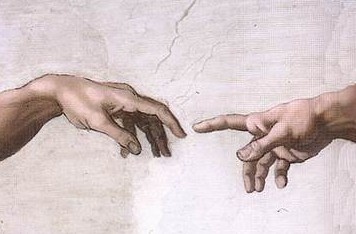 Occupational exposures to heavy metals and other toxins in colours and inks, as well as smoking and vitamin D deficiency from working indoors, may have contributed to the rheumatic disease (RD) seen in famous artists such as Michaelangelo and Renoir.
Occupational exposures to heavy metals and other toxins in colours and inks, as well as smoking and vitamin D deficiency from working indoors, may have contributed to the rheumatic disease (RD) seen in famous artists such as Michaelangelo and Renoir.
A systematic review of the evidence has found many of the great creators, across different centuries, countries and continents, have lived – and worked – with conditions such as rheumatoid arthritis, gout and systemic sclerosis.
The review, published in the Journal of Rheumatology, found all 20 artists with confirmed or presumptive diagnoses continued to perform their artistic activities despite the limitations secondary to their RD.
“Importantly, most (n = 15/20) of these artists had an art style change after the beginning of the RD. For only one (1/20) artist (Michelangelo), the RD seemed to not interfere with his artistic abilities, and for 4/20 (Aleijadinho, Barrie Cook, Benvenuto Cellini, and Erasmus of Rotterdam), we do not have information regarding this aspect,” the study authors said.
It found the ultimate Renaissance man Michelangelo had probable saturnine gout secondary to lead paint exposure. Its clinical features included arthritis, tophi, urinary stones, changes in the first carpometacarpal joint, difficulty writing and depression.
French painter and sculptor Renoir had confirmed rheumatoid arthritis featuring severe polyarticular synovitis, deformity on hands, feet and coxofemoral joint, fixed flexion of the knees, destruction and ankylosis of his right shoulder, ruptures in several extensor tendons of the hands, as well as extra articular features.
That his disease changed his artistic style is evidenced by smaller and more rapid strokes, his invention of the moving canvas roll, more interest in the human body instead of landscapes, and use of more vivid colours.
“When we discovered that the majority of the artists that had RD changed their style due to their rheumatic conditions, we were able to conclude that there is a close relationship between disease and art.”
“In the same way that the pain and functional limitation caused by RD evoked sadness in these artists, that pain also provoked them to create beauty in their artistic works.”
The review said toxic heavy metals such as cadmium were used in ink composition, such as in chrome yellow, molybdenum orange, and cadmium red; iron black and copper-zinc alloy powder (gold bronze) are used in novel silver and gold inks.
“Delayed hypersensitivity to metals was already evaluated in patients with RA, and significant amounts of mercury, titanium, and palladium were observed in these patients,” it said.
Other greats mentioned in the review included the German painter Rubens, Swiss painter and poet Paul Klee, Irish poet and writer James Joyce, and Mexican painter Frida Kahlo.